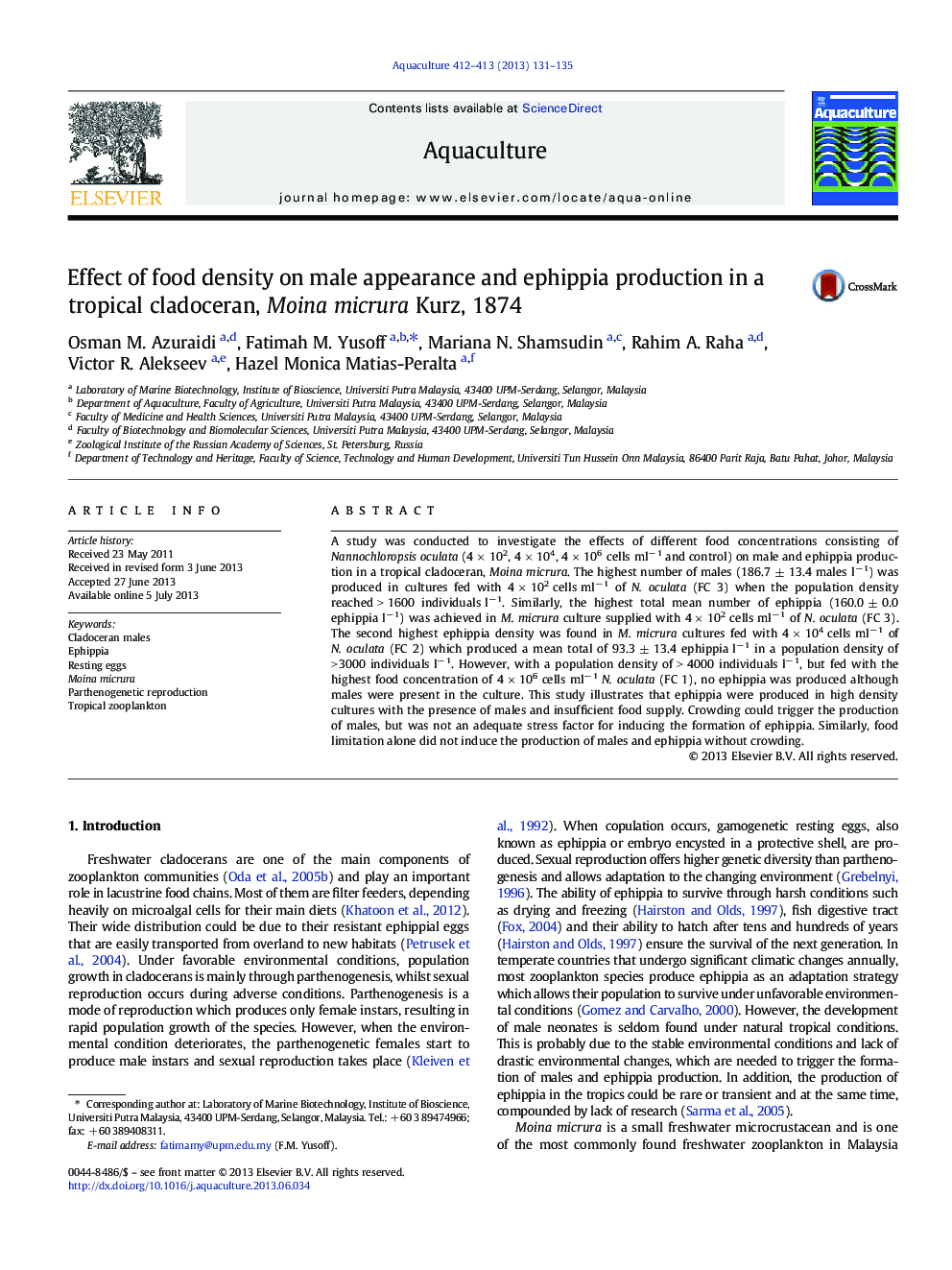| Article ID | Journal | Published Year | Pages | File Type |
|---|---|---|---|---|
| 8495527 | Aquaculture | 2013 | 5 Pages |
Abstract
A study was conducted to investigate the effects of different food concentrations consisting of Nannochloropsis oculata (4 Ã 102, 4 Ã 104, 4 Ã 106 cells mlâ 1 and control) on male and ephippia production in a tropical cladoceran, Moina micrura. The highest number of males (186.7 ± 13.4 males lâ 1) was produced in cultures fed with 4 Ã 102 cells mlâ 1 of N. oculata (FC 3) when the population density reached > 1600 individuals lâ 1. Similarly, the highest total mean number of ephippia (160.0 ± 0.0 ephippia lâ 1) was achieved in M. micrura culture supplied with 4 Ã 102 cells mlâ 1 of N. oculata (FC 3). The second highest ephippia density was found in M. micrura cultures fed with 4 Ã 104 cells mlâ 1 of N. oculata (FC 2) which produced a mean total of 93.3 ± 13.4 ephippia lâ 1 in a population density of > 3000 individuals lâ 1. However, with a population density of > 4000 individuals lâ 1, but fed with the highest food concentration of 4 Ã 106 cells mlâ 1 N. oculata (FC 1), no ephippia was produced although males were present in the culture. This study illustrates that ephippia were produced in high density cultures with the presence of males and insufficient food supply. Crowding could trigger the production of males, but was not an adequate stress factor for inducing the formation of ephippia. Similarly, food limitation alone did not induce the production of males and ephippia without crowding.
Keywords
Related Topics
Life Sciences
Agricultural and Biological Sciences
Aquatic Science
Authors
Osman M. Azuraidi, Fatimah M. Yusoff, Mariana N. Shamsudin, Rahim A. Raha, Victor R. Alekseev, Hazel Monica Matias-Peralta,
